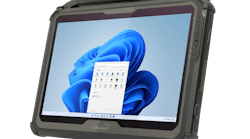By John McHale
MOUNTAIN VIEW, Calif. Experts at Aerojet in Ranchero Cordova, Calif., are using the Silicon Graphics Inc. (SGI) modular server technology to power mobile satellite stations for the U.S. Air Force Space-Based Infrared System (SBIRS).
SGI engineers in Mountain View, Calif., will provide 18 of their Origin 3000 series servers and 27 Onyx 3000 graphics systems for SBIRS mobile satellite ground stations. The SGI Origin 3000s will do front-end processing of SBIRS satellite data, while the SGI Onyx 3000s will display the data for U.S. military operators, SGI officials say.
Each mobile satellite ground station will include two Origin 3000s (one for redundancy) and three rugged Onyx 3000s. Mobile ground stations complement fixed SBIRS ground stations already in place, SGI officials say.
SBIRS is to replace the Defense Support Program (DSP) satellites, which represent a nearly 30-year-old constellation, as the primary initial warning system for ballistic missile attacks on the U.S., its deployed forces, and its allies.
SBIRS will warn national and theater commanders of missile attacks in real-time. The system also will detect and track enemy missile launches, and cue missile defenses, SGI officials say.
For the ground segment of the SBIRS program, Aerojet is providing ground systems for satellite control, mission data processing, telemetry, and tracking and operations. Aerojet is a subsidiary of GenCorp, also located in Ranchero Cordova, Calif.
The Origin 3000 systems " can be scaled to meet specific needs by inserting processors, disk drives, and other components onto a common infrastructure," says Dr. Daryoush Tehranchi, executive manager for defense advanced programs at SGI's Federal division. "This design enables peripherals to be changed or updated without even shutting off the computer."
The Origin 3000 servers that Aerojet chose for the ground stations "were robust enough to pass all the military requirements for the mobile units and didn't need any modifications," Tehranchi says. The Onyx2 and Onyx 3000s, meanwhile "have to be modified to meet military requirements for form, fit, and factor," he continues.
Experts from Computer Ruggedization Integration (CRI) in Austin, Texas, will strengthen the SGI Onyx 3000s for the mobile ground stations, SGI officials say. "Part of this modification is a creative swivel-mounted base for the workstation, developed by Aerojet electronics systems and implemented by CRI," Tehranchi says. "This functionality allows quick access to the workstations and peripherals for maintenance."
The Origin 3000s and Onyx 3000s are based on SGI's NUMAflex modular technology, which is a brick-style system for building systems from a common set of building blocks, SGI officials say. NUMAflex enables users to build a configuration one component at a time and adopt new technologies that map to their specific business or research needs, company officials say.
The SGI Origin 3000 and SGI Onyx 3000 systems are based on MIPS processors using the IRIX operating system, SGI's flavor of UNIX, Tehranchi says. Technical applications that currently run on the SGI 2000 and Onyx2 systems will run on the SGI 3000 family systems, SGI officials say.
For more information contact Silicon Graphics by phone at 650-960-1980, by fax at 650-932-0661, by post at 1600 Amphitheatre Parkway, Mountain View, Calif. 94043-1351, or on the World Wide Web at http://www.sgi.com/.



